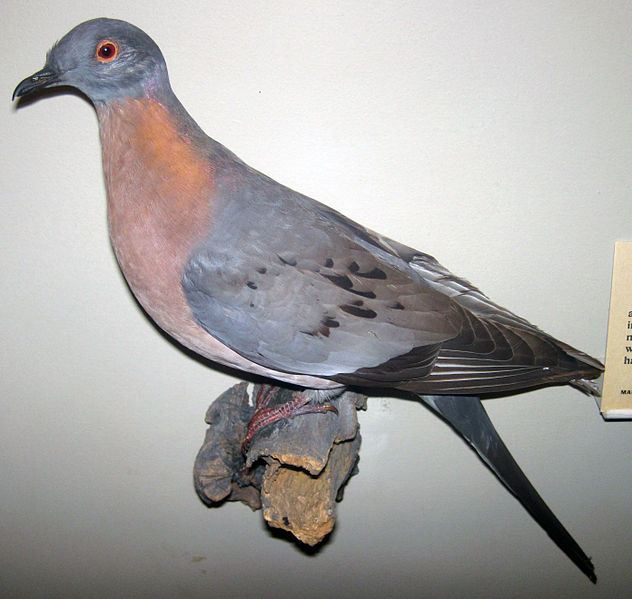Archivo:Ectopistes migratorius (passenger pigeon).jpg

Tamaño de esta previsualización: 632 × 599 píxeles. Otras resoluciones: 253 × 240 píxeles · 506 × 480 píxeles · 810 × 768 píxeles · 1080 × 1024 píxeles · 2160 × 2048 píxeles · 2784 × 2640 píxeles.
Ver la imagen en su resolución original (2784 × 2640 píxeles; tamaño de archivo: 1,73 MB; tipo MIME: image/jpeg)
Historial del archivo
Haz clic sobre una fecha y hora para ver el archivo tal como apareció en ese momento.
| Fecha y hora | Miniatura | Dimensiones | Usuario | Comentario | |
|---|---|---|---|---|---|
| actual | 16:39 2 abr 2015 |  | 2784 × 2640 (1,73 MB) | FunkMonk | Transferred from Flickr via Flickr2Commons |
Usos del archivo
La siguiente página usa este archivo:
Uso global del archivo
Las wikis siguientes utilizan este archivo:
- Uso en bn.wikibooks.org
- Uso en en.wikipedia.org
- Holocene extinction
- Passenger pigeon
- User:Nutcracker100
- List of the prehistoric life of Alabama
- List of the prehistoric life of Florida
- List of the prehistoric life of Tennessee
- List of the prehistoric life of West Virginia
- List of the prehistoric life of North Carolina
- List of the Cenozoic life of Alabama
- List of the Cenozoic life of Wyoming
- List of the Cenozoic life of Virginia
- List of the Cenozoic life of North Carolina
- List of the Cenozoic life of Georgia (U.S. state)
- List of the Cenozoic life of Florida
- List of the Cenozoic life of California
- User:Catfurball
- User:Abyssal/Image captions to use
- Wikipedia:Userboxes/Birds
- User:Abyssal/Aspect ratio table
- User:Toohak113
- User:Diriector Doc/Ubx/Passenger Pigeon
- Wikipedia talk:WikiProject Userboxes/Ideas/Archive 15
- User:Lin Xuexi
- User:Diriector Doc/UbxGalaries/Nature
- User:Wikiselkie
- User:Geekgecko
- User:Missingnohk97
- User:Cedelmwood/Userboxes
- User:Mishmash Ideas
- User:좀비 브렌다
- User:Pinkelekoladele
- User:Asocos
- User:CryolophosaurusEllioti/Userboxes
- User:.samtxt.
- User:Pigginn
- User:Trashgoose
- User:WHEOOButEncyclopedia
- User:Davefrfr
- User:Mushroom133
- User:Locust Valley
- User:I.Do.In.Fact.Exist
- Uso en en.wikibooks.org
- Uso en fr.wikipedia.org
- Uso en ka.wikipedia.org
- Uso en la.wikipedia.org
- Uso en no.wikipedia.org
- Uso en pl.wikipedia.org
- Uso en pt.wikipedia.org
Ver más uso global de este archivo.